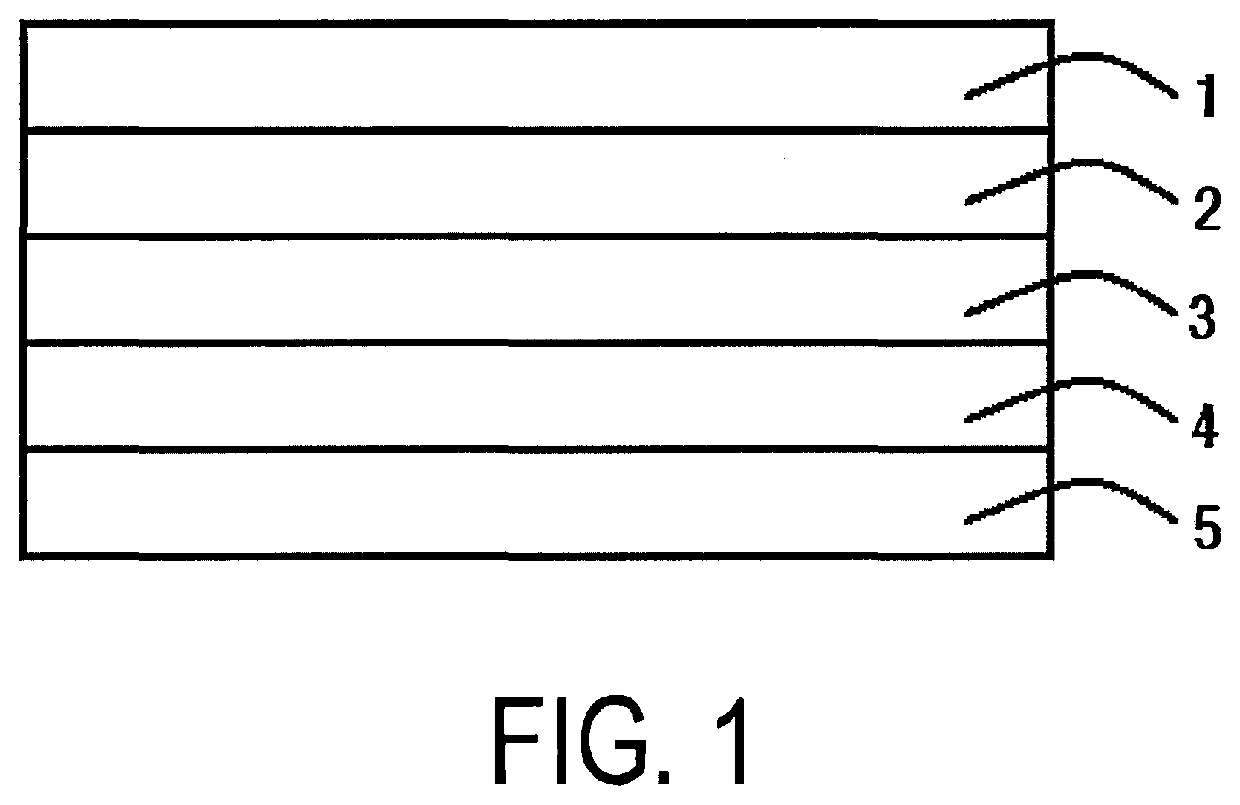Resin composition, molded article, film, and multilayer film
a technology of composition and film, applied in the direction of synthetic resin layered products, layered products, chemistry apparatus and processes, etc., can solve the problems of not having so high oxygen barrier properties, failing to provide sufficient oxygen barrier properties, and polyamide resins, etc., to achieve excellent oxygen barrier properties and transparency, low yellowness, and high tensile elongation at break
- Summary
- Abstract
- Description
- Claims
- Application Information
AI Technical Summary
Benefits of technology
Problems solved by technology
Method used
Image
Examples
examples
[0091]The present invention will be described more specifically by way of the following examples. Those shown in the examples below, such as materials, used amounts, ratios, processing contents, and processing procedures can be changed as appropriate as long as the spirit of the present invention is not departed. Thus, the scope of the present invention is not limited to the specific examples described below.
Polyamide Resin (A)
[0092]Polyamide 6 (PA6): Ube Nylon 1022B, available from Ube Industries, Ltd.
[0093]Polyamide 6,66 (PA6,66): Novamid 2030FC, available from DSM
[0094]Polyamide 6I / 6T (PA6I / 6T): Grivory G21, available from EMS-GRIVORY, the molar ratio of isophthalic acid to terephthalic acid is 2:1.
Polyamide Resin (B)
synthetic example b-1
[0095]Polyamide resin B-1 shown in Table 1 was synthesized according to the following method.
[0096]Into a reaction vessel equipped with a stirrer, a partial condenser, a total condenser, a thermometer, a dropping funnel, a nitrogen introduction tube, and a strand die, 7000 g of adipic acid (47.90 mol), 5305 g of isophthalic acid (31.93 mol), 1.67 g of calcium hypophosphite (Ca(H2PO2)2) (30 mass ppm in terms of phosphorus atom concentration in the polyamide resin), and 1.07 g of sodium acetate were precisely weighed and placed. After thorough purge with nitrogen, the reaction vessel was charged with nitrogen to an internal pressure of 0.4 MPa, and the inside of the system was heated to 190° C. while stirring under a small amount of nitrogen stream. The molar ratio of sodium acetate / calcium hypophosphite was 1.33.
[0097]To this, 10819 g of m-xylylenediamine (79.43 mol) was added drop-wise under stirring, and the temperature in the system was continuously increased while removing the ge...
synthetic example b-2
[0100]The polyamide resin B-2 was obtained in a similar manner as in Synthetic Example B-1 with the exception that the molar ratio of adipic acid to isophthalic acid was modified to 50:50.
[0101]The resin B-2 was found to have ΔHm, a crystal melting enthalpy during the temperature increasing process, of approximately 0 J / g and be amorphous.
PUM
| Property | Measurement | Unit |
|---|---|---|
| mol % | aaaaa | aaaaa |
| mol % | aaaaa | aaaaa |
| mol % | aaaaa | aaaaa |
Abstract
Description
Claims
Application Information
 Login to view more
Login to view more - R&D Engineer
- R&D Manager
- IP Professional
- Industry Leading Data Capabilities
- Powerful AI technology
- Patent DNA Extraction
Browse by: Latest US Patents, China's latest patents, Technical Efficacy Thesaurus, Application Domain, Technology Topic.
© 2024 PatSnap. All rights reserved.Legal|Privacy policy|Modern Slavery Act Transparency Statement|Sitemap

